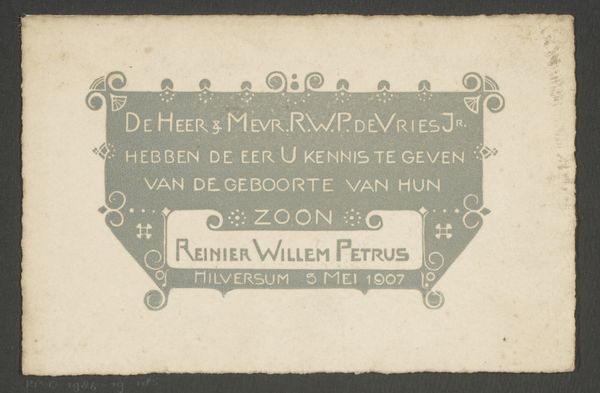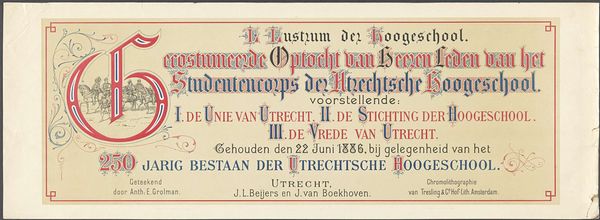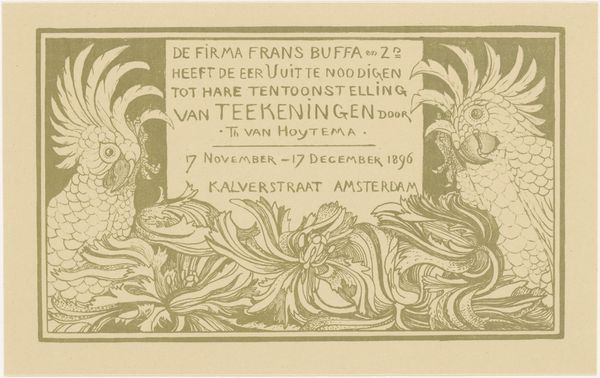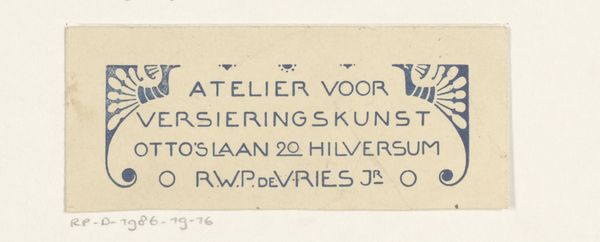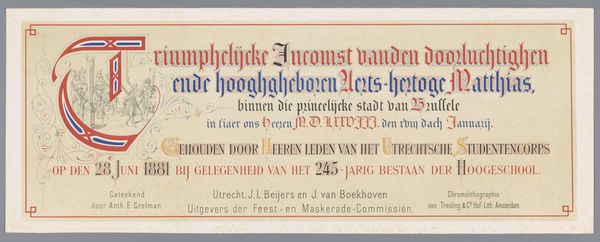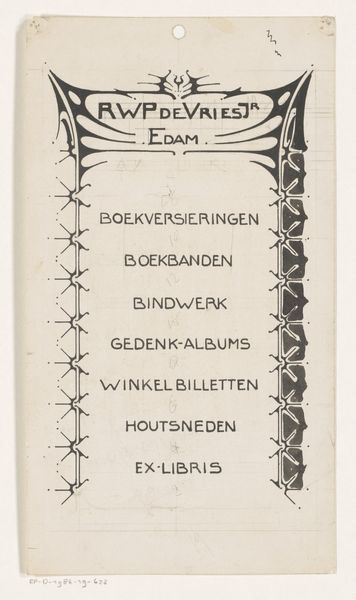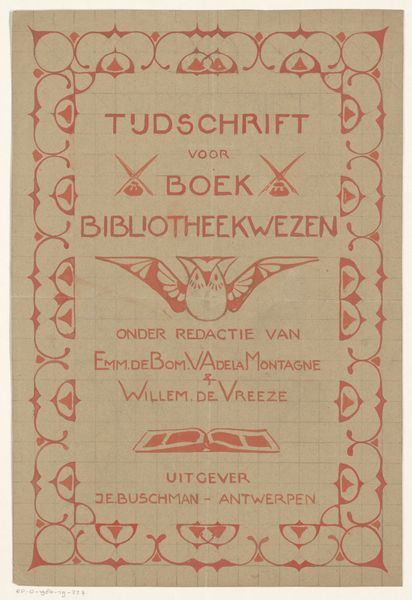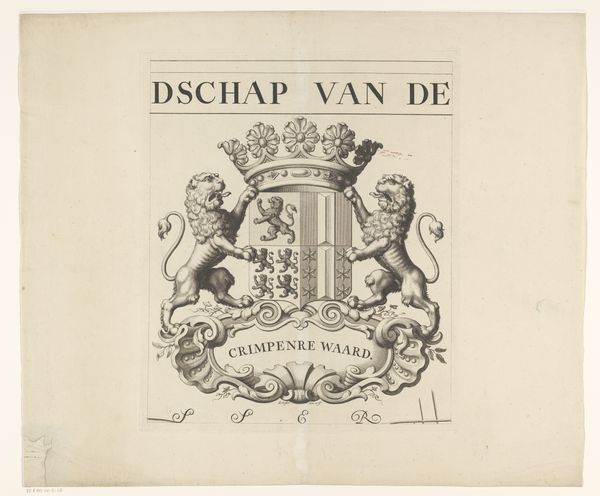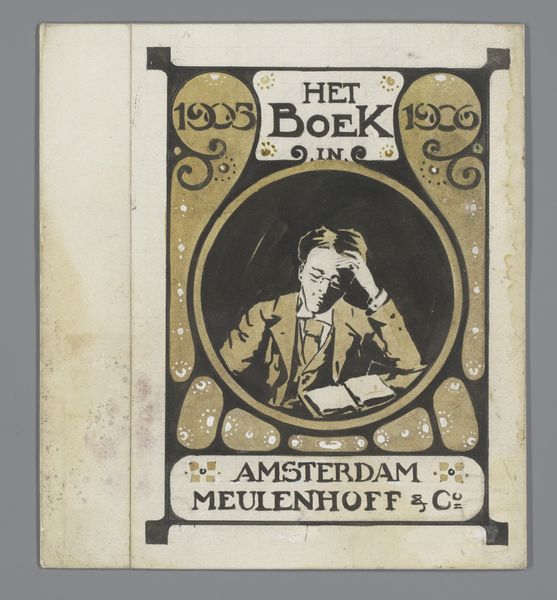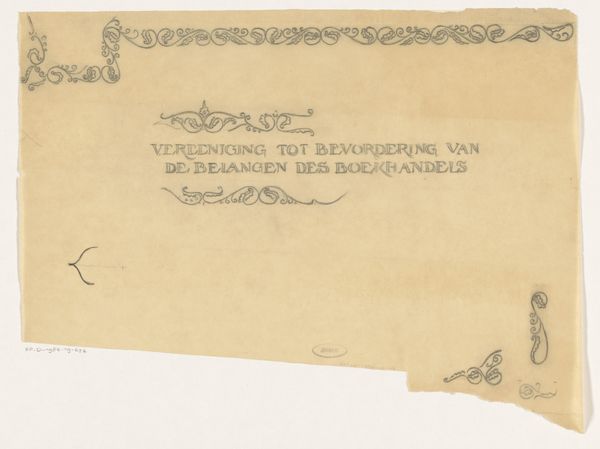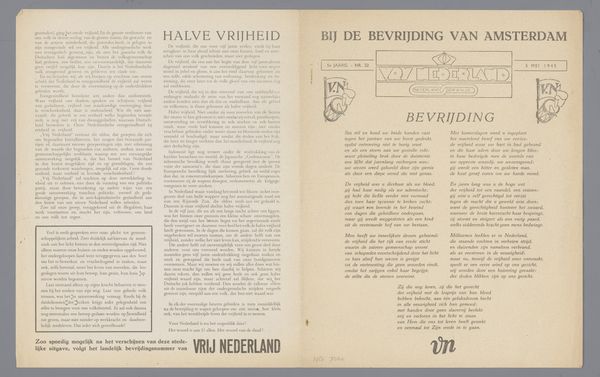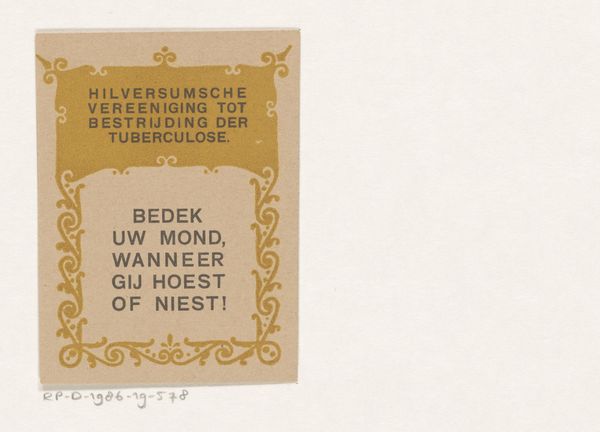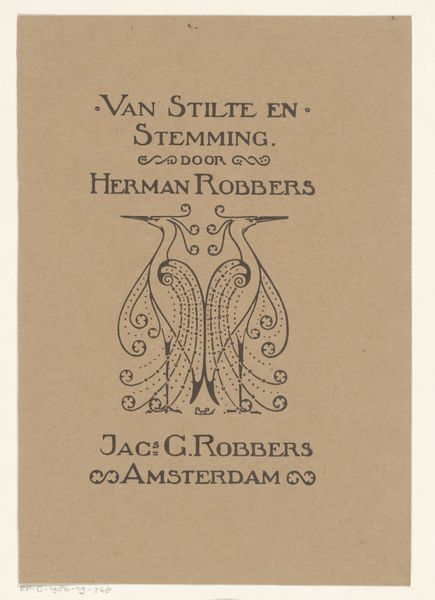
Lidmaatschapsbewijs voor het Internationaal Uitgevers-congres in 1910 1910
0:00
0:00
#
type repetition
#
aged paper
#
homemade paper
#
parchment
#
thick colouring
#
old engraving style
#
hand drawn type
#
thick font
#
golden font
#
coloring book page
Dimensions: height 115 mm, width 151 mm
Copyright: Rijks Museum: Open Domain
Editor: Here we have a membership certificate for the International Publishers Congress in 1910 by Reinier Willem Petrus de Vries. It’s printed in blue ink and the style… feels very much of its time, very formal. What stands out to you about this piece? Curator: What interests me is its function within the socio-political landscape of early 20th century publishing. Look at the very conscious effort to brand this "International Publishers Congress." Who was this trying to appeal to and what kind of power did this conglomerate wield at the time? What's interesting here is how art is being used to construct identity and legitimize power for this group. Editor: That’s a great point! I hadn’t considered the power dynamics. So, it's not just a certificate; it’s a symbol of belonging to a specific, perhaps influential, group? Curator: Exactly. Certificates like these weren't merely about conveying information; they were about establishing authority and conveying status. Who were the members? Were there publishers excluded based on, say, language or political ideology? It serves to ask critical questions about the power dynamics within the publishing industry at that moment. Editor: So the visual style and formality weren't just aesthetic choices; they were tools used to reinforce that power and exclusivity? Curator: Precisely. By understanding the context in which this certificate was created and circulated, we can begin to unpack the politics of imagery and the social role of art within that historical framework. Editor: I see now. It makes me look at historical documents in a whole new light. Curator: Absolutely. Art isn’t made in a vacuum. Examining the historical forces behind artistic decisions offers vital perspectives into the art's cultural significance.
Comments
No comments
Be the first to comment and join the conversation on the ultimate creative platform.

